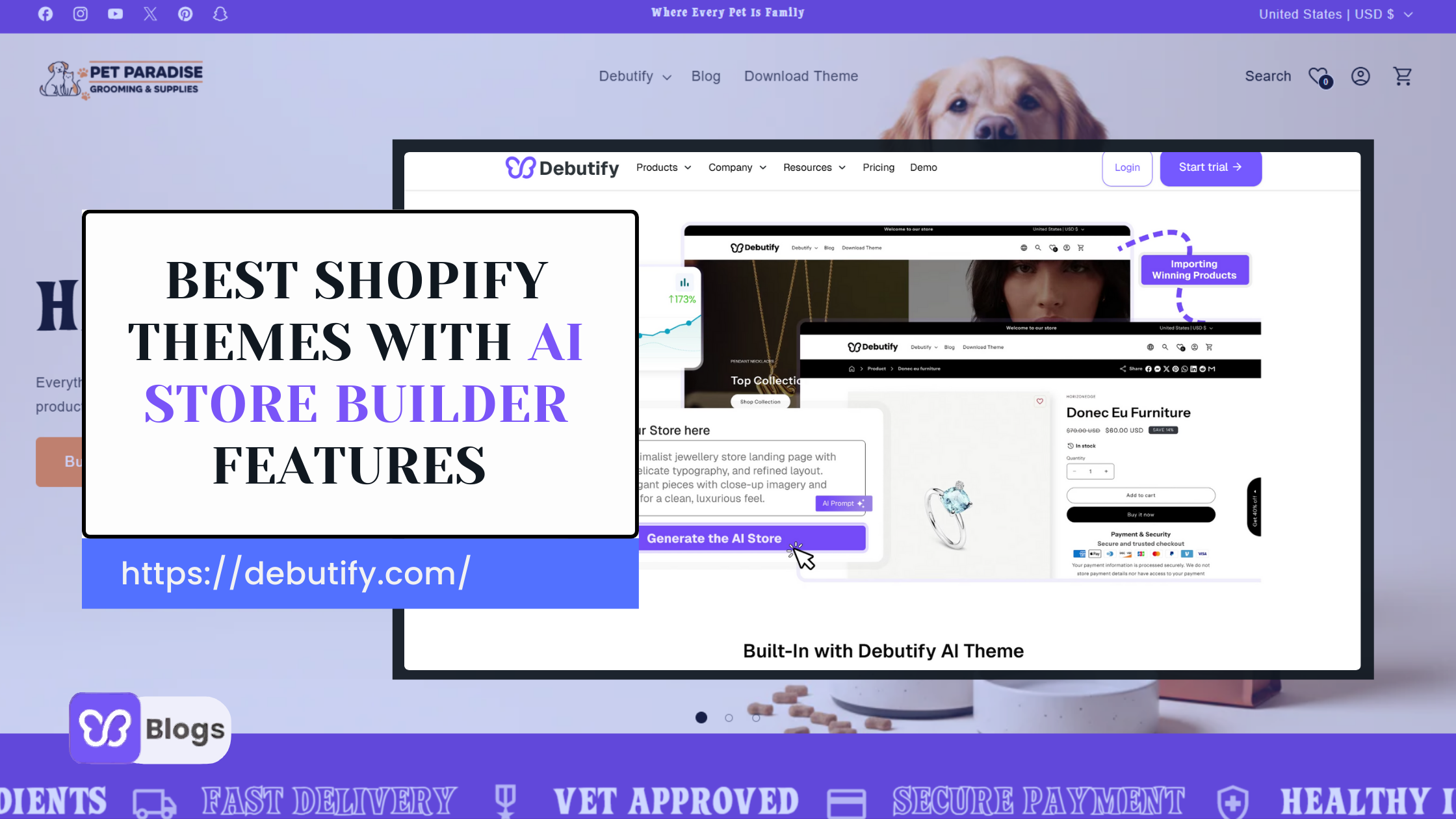Have you ever wondered why every ecommerce article begins with a section highlighting the importance of knowing your customers?
That's because knowing your target audience is critical for the growth and success of any online business.
In ecommerce, your buyers have all the power. They can select or reject any brand based on reviews and price comparisons.
Also, you can't possibly serve your customers the best if you don't know who they are and what are their needs.
There is only one thing that will help you know your customers better - Data.
Thanks to the advancement in ecommerce technology, data collection is no more a challenge for ecommerce businesses.
But is collecting customer data enough to improve your ecommerce sales strategy?
Certainly not.
It's also crucial to productively and practically use that data to your advantage. According to research, more than 4 in 10 teams fail to benefit from the ecommerce data.
We have created this post to help you know the top 9 ways to collect and use customer data to grow your ecommerce business. After reading this post, you'll be able to harness your customer data in the best possible manner. So let's begin.
What Is Customer Data/Ecommerce Analytics?
Businesses that do not take into account customer data are basically leaving it all up to chance.
Sure, sometimes your efforts do pay off, but you'd not be able to implement the same tactics in the future as you won't know what worked for your strategy in the past.
But you can create a more targeted conversion funnel when you focus on ecommerce data and analytics aka ecommerce data analytics.
As far as the formal definition is concerned, customer data means all information a customer provides while interacting with your brand through online or offline channels.
Customer data is pivotal for the success of any online business. That is why all big brands realize the significance of customer data and create and implement data-driven techniques to know more about their target audience.
What Customer Data Do You Need?
In all honesty, any data related to your customers is crucial for your business. If this statement is making you feel overwhelmed, you're not alone.
Many online sellers fail because they do not differentiate between quality consumer data and vanity analytics. So before we dive into the details of customer data, their benefits, and their best use cases, we need to understand the different types of customer data.
Persona Data
Creating buyer personas is an integral part of your funnel-building process. But you can't fully flesh these buyer personas out without collecting some useful data.
Here are four types of data you need to collect to curate customer profiles.
- On-paper information: It includes all surface-level information, such as name, age, gender, and location that helps you get a basic idea about who your customer is.
- Descriptive data: It refers to information regarding your customer's career, education, income level, and more.
- Behavioral data: This type of data helps you determine how customers react when interacting with any particular brand.
- Psychographic data: It includes your buyer's interests, likes/dislikes, etc.
Quantitative Data
Quantitative data, as its name suggests, is that which can be concluded into numbers. As an online seller, you'll want to keep a close eye on how data changes over time, and that's only possible when you're tracking the quantitative data of your business.
Qualitative Data
On the other hand, qualitative data revolves around your customers ' experiences and how they feel about your brand.
Benefits Of Using Customer Data
Key To Create A Product That Your Customers Will Love
Present-day customers are already victims of choice overload. That goes without saying that they have high expectations too. Data-driven companies use data to know about their customers ' likes/dislikes and buying preferences, making it easier for them to create products that their customers will truly love.
Clear Pricing Strategies
Your ecommerce sales strategy is incomplete without a clear and comprehensive pricing strategy. If your prices are too high, you'll end up losing lots of potential customers who'll switch to your competitors offering better pricing strategies. Here are the 15 Psychological Pricing Hacks you can use to improve your pricing strategy.
So yes, pricing matters.
But can you create a clear pricing strategy without knowing what your target audience is looking for and what maximum amount they're willing to pay for those products? No, right?
That's where customer data comes in.
Better Customer Service
For successful businesses, providing top-notch customer support should always be the top priority. But if you think solving your customer's concerns after they reached out to you is enough, then let us tell you that modern customers are smarter than you think.
Customer data plays a crucial role here. It enables you to identify the voids in your product personas and identify areas where your customers will likely need support even before they reach out to you for assistance.
Personalized Shopping Experience
There is no one-size-fits-all rule applicable when we talk about ecommerce. Every customer is different and needs to be treated uniquely. Many studies prove that customers are more likely to shop from a brand that puts effort to know their needs and come up with a personalized solution.
When you use customer data, you'll be able to understand your customer's preferences and come up with solutions that exceed their expectations.
Good Inventory Management
Ecommerce analytics helps you keep an eye on your inventory. Knowing how much stock you currently have and when you need to order some more will help you fulfill your orders on time.
Customer Retention
Customers prefer brands that treat them like people and not numbers. When you invest your time and money in knowing more about your customers, your buyers will feel more valued. As a result, they'll always prefer your brand over your competitors.
Retaining your existing customers is always better than acquiring newer ones. Not only does it save you money but improves your AOV.
Challenges
At this point, you must have a clear understanding of why customer data is critical to grow your ecommerce business and boosting online sales. But similar to everything else in this world, the process of data collection also comes with its unique challenges.
Collecting insufficient data: The biggest mistake ecommerce businesses make is they settle for basic information, including age, name, gender, and location. But what about behavioral or psychographic data? You can never create a profitable ecommerce sales strategy without knowing your target audience's interests and likes/dislikes
Collecting too much data: Similarly, you should not go overboard and exhaust your resources for acquiring data that is not beneficial for you
Sure, determining the right balance can be tricky at times. But as you grow as a seller and keep implementing the latest data collection and implementation techniques, things will eventually get better and in control.
9 Ways To Collect And Use Customer Data To Grow Your Ecommerce Business (Data Collection + Use Cases)
1. Ask Your Customers At Checkout
The easiest way to know about your customers (demographic information/likes/dislikes/shopping experience) is by asking them directly. The best time to ask for this information is during the checkout process when a customer has already spent enough time on your site.
Some stores include a form at the end of the checkout page that asks the user about their demographic information. You can also ask your users to rate their experience on a scale of 1-10 to track the satisfaction score.
Now use that information to offer personalized recommendations when the same user visits your store the next time.
2. Use Location-Based Advertising
Location-based marketing or geofencing is another tactic that allows online businesses to locate customers who live nearby their physical stores. When a customer is exploring your online shop, you can inform and encourage them to visit a shop and purchase a product at a discounted price.
3. Visitor Frequency Data
Visitor frequency is a critical ecommerce metric that allows ecommerce businesses to track their new and regular website visitors.
Since new users act differently than regular customers, analyzing this metric will enable you to create more personalized and targeted campaigns for the customers who are visiting your store for the first time.
To track this data, you can use the Google Analytics New VS Returning feature.
There are many ways you can use this information to your advantage. For instance, you can capture new visitors right away. Also, you can identify and reward your returning customers.
4. Marketing Channel Data
Marketing channels refer to all the sources from where you get your traffic (paid/unpaid). Analyzing those channels will provide you with a wealth of data that you can use to fine-tune your future marketing efforts.
If a channel is not meeting your set expectations, you can either adjust your strategy or remove that channel from your marketing plan.
Again, you can use Google Analytics to track the progress of your current marketing channels. There is a dedicated Channel Report you can use to assess the progress in terms of behavior and conversions.
5. Site Search Data
Another effective source from where you can access valuable customer data is your online store's search function.
By analyzing your site's search function, you'll know about the keywords your visitors have entered in the search box. With this information at hand, you can better control your search-driven merchandising rules.
Site search allows online businesses to keep an eye on their customer's needs and uncover new product ideas.
6. Funnel Performance Data
What is the benefit of getting tons of traffic on your site when you're unable to make a single sale?
If you're struggling with your store's conversion metrics, then you need to start tracking your funnel performance.
Funnel performance analysis is a comprehensive process that requires you to carefully monitor each stage of your funnel to determine the areas your customers are experiencing friction in.
For this, you can use Google Analytics Shopping Behavior Analysis feature to track 'no cart addition', 'cart abandonment', and 'checkout abandonment' data.
For instance, if you're receiving visitors, but they're not adding products to their carts, you can change your descriptions or reconsider your pricing strategy to encourage visitors to add products to their carts.
Similarly, higher cart abandonment or abandonment checkout may be due to a complex checkout process or the unavailability of multiple payments or delivery options.
7. Product Performance Data
No, you don't always have to analyze data related to your customers. Many times what you're selling is the root cause of your business failure. For this, you have to analyze product performances to determine which products gained enough traction and which products aren't performing well.
Tracking cart-to-detail and buy-to-detail data will help you spot your best-selling products. Once you know what specific products contribute well to your sales funnel, you can focus on them and present them in a better manner in front of your potential customers.
8. Customer Retention Data
Customer retention is one of the best ways to grow your ecommerce store and boost your online sales. By monitoring when your customer first visited your store, and the next time they entered your website, you can identify patterns.
Based on this data research, you can tweak your campaigns and get even better results without increasing your paid ad spend.
9. Social Influencer Analysis
Did you know influencer marketing generates up to a 37% higher retention rate than other available marketing channels?
Social influencer analysis is a proven technique that helps ecommerce businesses identify prominent influencers in their industry who can influence larger audiences through their social media following.
There are different tools available online to filter influencers by type, location, and level of influence.




